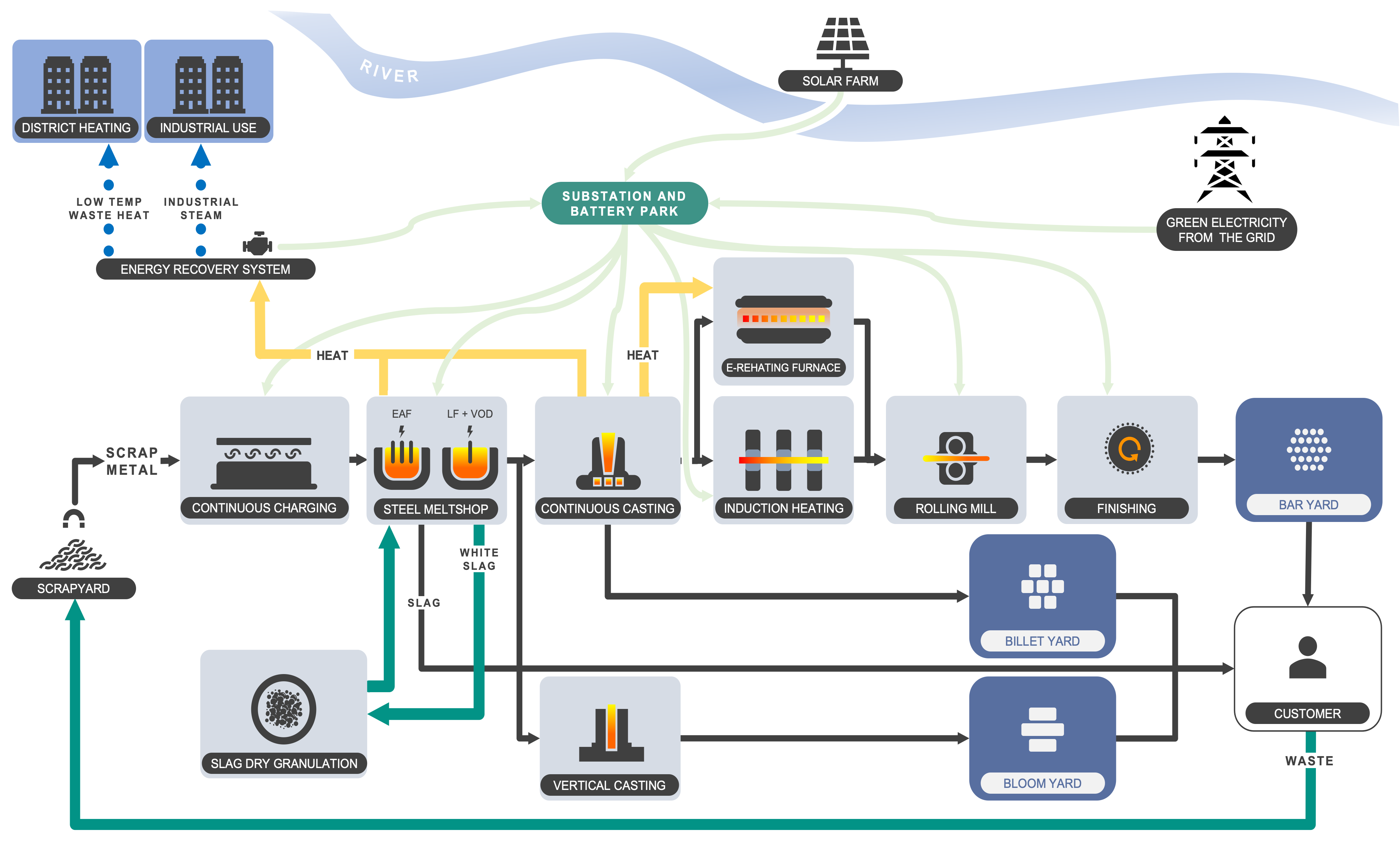What Is Green Steel?
Heavy industry, including metallurgy, is responsible for 7-8% of the global CO₂ emissions. Within the metallurgical industry, however, there are only two harmful processes, the so-called ‘liquid phase’ and the ‘reheating phase’.
What We Do
Cyclosteel melts 350 thousand tons in an electric furnace of the 1.2 million tons of scrap metal generated locally. The liquid steel is further alloyed in ladle furnaces with a VODs.
47% of the electricity used to supply the minimill is provided by a 85 MW solar power park (with battery park) and a 24 MW wind turbine park to be built adjacent to the plant. The rest is covered by other green energy sources.
The finished steel is crystallized in a continuous casting machine and a semi-continuous caster and transformed into billets and blooms. The hot billet then goes directly into the rolling mill (one-heat technology) where alloyed steel barsare produced mainly for automotive, engineering and tooling applications. The complete mill is fully electric from the melting till the finishing.

– Rotate phone for better view –
